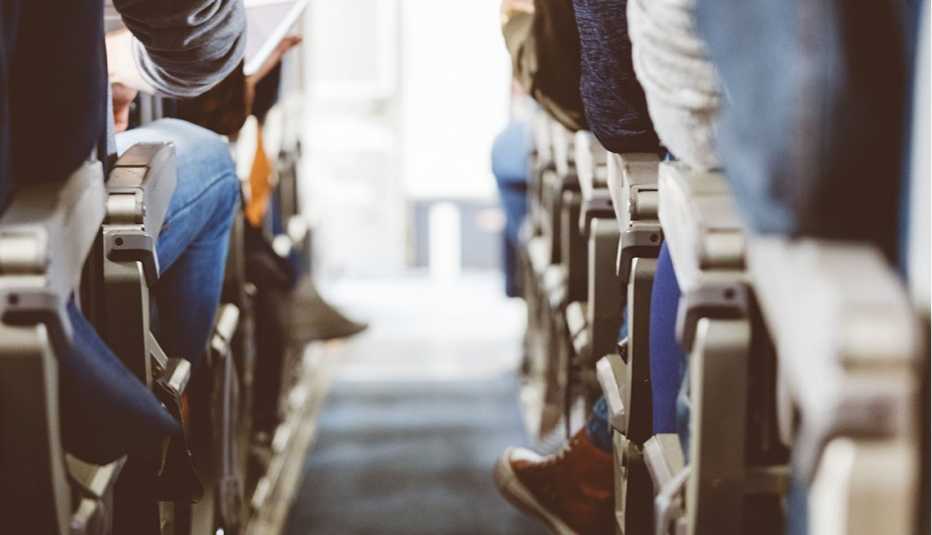AARP Hearing Center


If you’ve seen colorful knee-length stockings on your fellow air travelers lately, you may be spotting a pair of stylish (yes!) compression socks. Now offered in sporty or designer versions, they’re tighter-than-average socks that grow gradually looser toward the knee, worn by many passengers during flights. The idea is that they help circulate, or “milk,” the blood back up the leg to the heart, which can reduce swelling in your feet and possibly lower your risk of blood clots (also known as deep vein thrombosis, or DVT).


RejuvaHealth. This company was founded by Kelsey Minarik, a woman who developed a blood clot on a cross-country flight, and offers lots of styles — sheer, argyle , houndsooth — at a range of compression levels. About $30/pair.
Vim & Vigr . Choose from designer compression socks in many colors and patterns (most 15-20 mmHg), with a wide-calf option. About $30 and up/pair.
SB Sox Lite Compression Sox. This brand is a well-rated and affordable option, with socks available in lightweight fabric (15-20 mmHg). $9 or $10/pair.
Because you can't move much while seated on an airplane and are restricted in a position that may compress the blood vessels behind your knees and at your hips, plus the fact that you may be dehydrated, it “can be the perfect storm” for DVT, says Amanda Zaleski, PhD, an exercise physiologist at Hartford Hospital in Connecticut who researches blood clots.
Some evidence suggests that the socks can help prevent DVT in the air. A 2016 Cochrane Review report of nine studies found “high-quality evidence” that “airline passengers wearing compression stockings develop less symptomless DVT.”

































































More on Health
13 Ways to Ease Jet Lag
Changing time zones can be a drag — here's how to avoid itHow to Avoid the Hidden Health Hazards of Travel
Experts offer tips to help prevent injury and illness on your next trip
7 Tips to Avoid Dehydration While Traveling
Electrolytes, rest and plenty of liquids can stave off dizziness, fatigue and high heart rate